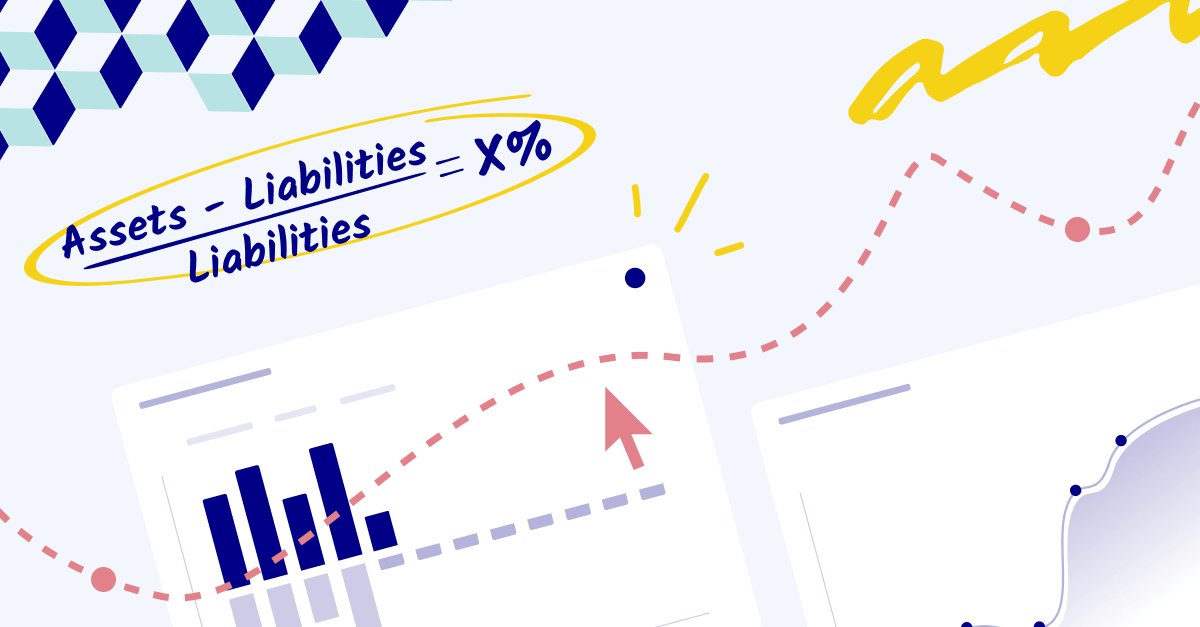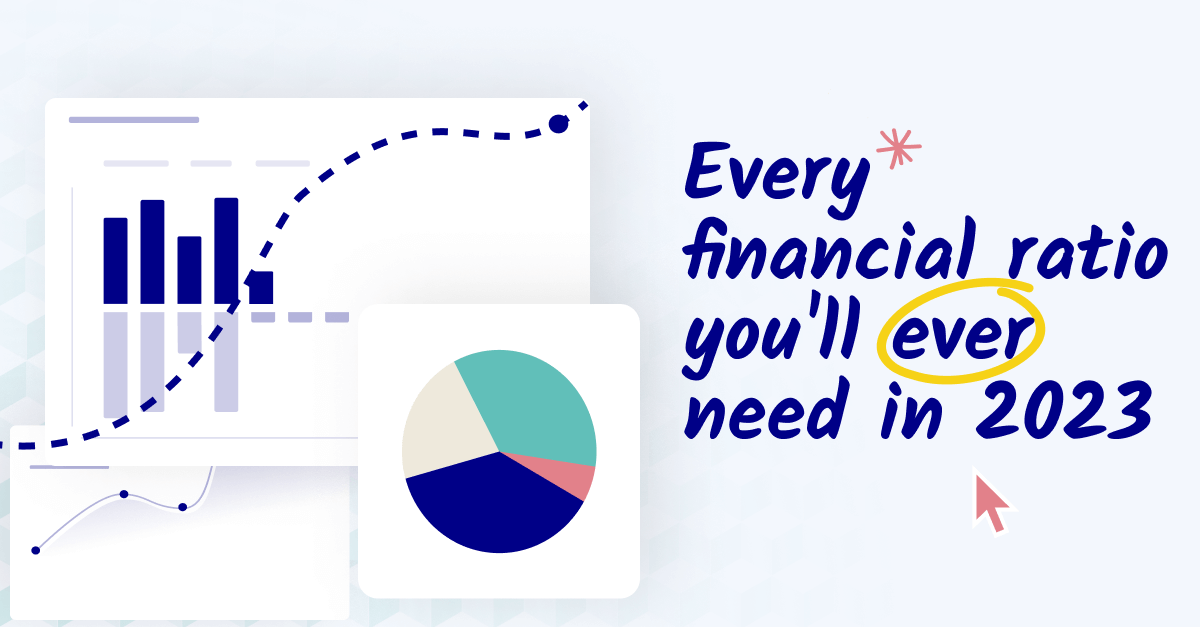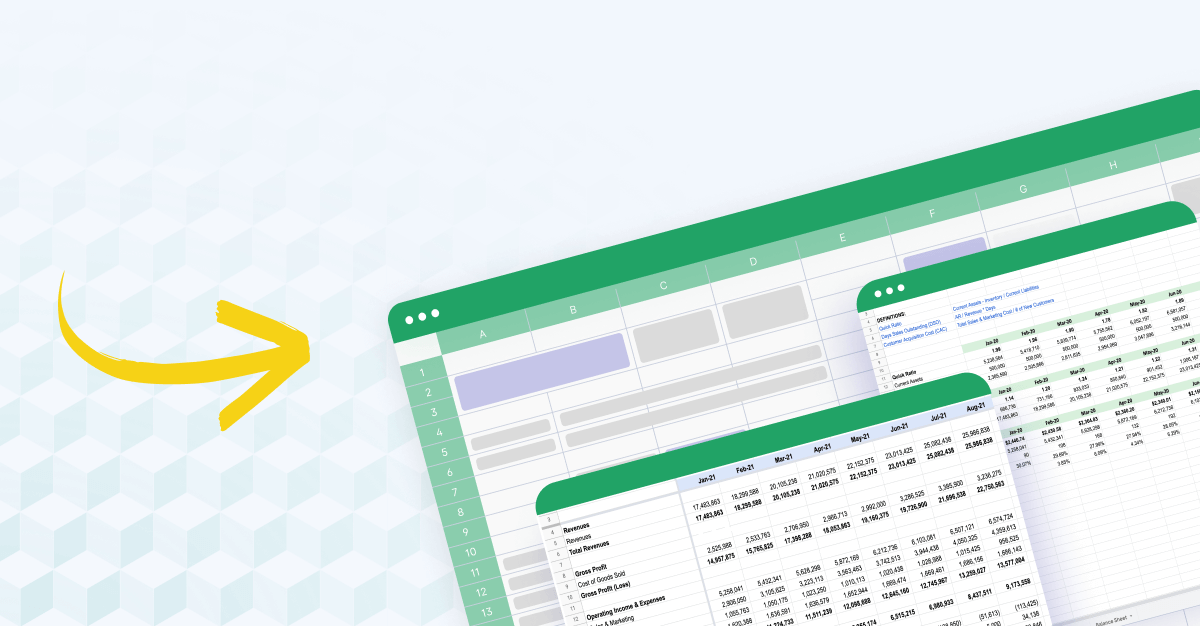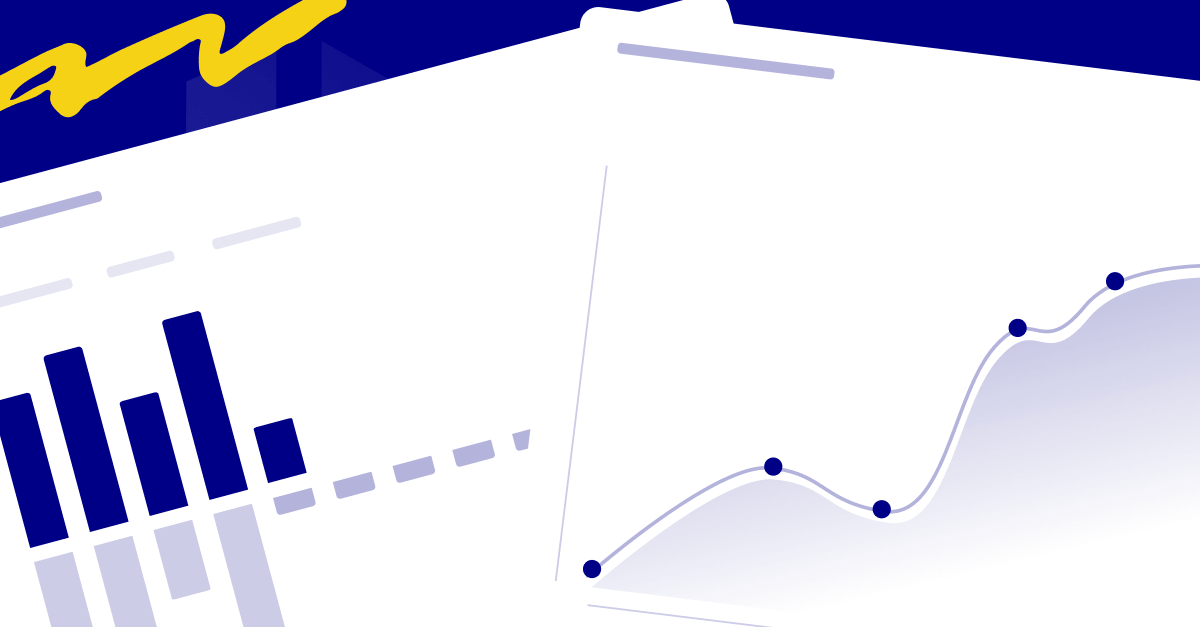Helpful terminology for calculating ratios
The quick and current ratios fall under the category of financial ratios called "liquidity ratios."
A liquidity ratio is a financial metric that determines a debtor's (usually a company's) ability to pay off its debt without external sources of funds.
(Some other liquidity ratios include Days Sales Outstanding (DSO) and the operating cash flow ratio.)
The advantages of liquidity ratios are they tell you the value (cash equivalents) of your liquid assets.
Before we talk about the quick and current ratios, it helps to understand the terms involved in the calculation. Understanding these terms will help you make the correct calculations.
Current liabilities: These are short-term debts due in less than one year, such as:
- Bank loans
- Owed taxes
- Interest due
- Dividends due to investors
- Accounts payable (money due to vendors for purchases)
For most companies, Accounts Payable is the largest source of short-term liability. These invoices typically have terms ranging from net thirty to net sixty days from receipt of the invoice.
Liquidity: The amount of cash (or convertible cash equivalents) available on the company's balance sheet.
Short-term liabilities: Debts a company owes due within one year from the issue date.
Long-term liabilities: Debts a company owes that are due more than a year from the issue date. Long-term liabilities are often paid in installments (like a bank loan), and the current due portion of the debt is listed separately on the balance sheet for accuracy.
Solvency: Holding quick assets that exceed liabilities and having the financial ability to pay debts.
Cash ratio: A measurement of a company's liquidity. Cash ratios are more conservative than other liquidity ratios because they only consider a company's most liquid resources.
What is the quick ratio?
The quick ratio measures a company's ability to pay off its current liabilities using cash or cash equivalents. It's sometimes called the acid test ratio or acid ratio.
Cash equivalents include easily converted (liquid) assets like:
- CDs, money market funds, banker’s acceptances.
- Marketable securities (stocks and bonds that can be quickly sold)
- Current accounts receivable (money owed from customers but not yet paid).
The quick ratio is a liquidity ratio, as it only calculates the ability to pay using a company’s most convertible quick assets: those that can be converted to cash in less than 90 days (hence the “quick”).
In other words, it only includes a company's most liquid assets. These are sometimes called quick assets or liquid assets.
Why is the Quick ratio important?
You need enough cash in the bank to pay loans, salary, taxes, dividends, and interest payments. After that, you need enough cash on hand to fuel growth. In other words: cash in the bank is an important signal about a company's financial health, even if it isn't the complete picture.
Cash isn’t the end of the story, of course. Many companies use debt to extend their capabilities, increase cash efficiency, and achieve results faster. Prepaid expenses can be a smart way of managing cash flow, and a little debt now can mean significant savings later. Debt financing allows companies to get the most bang for their buck. It even has some tax advantages.
(Please note: we’re not tax experts. For tax advice or consultation, contact your accountant.)
Calculating the quick ratio forces you to look at your company's liquidity. By taking stock of your immediate obligations, short-term debt, and other short-term financial obligations, you get a better picture of your company's overall financial health.
Why do companies use the quick ratio?
The quick ratio provides an easy temperature check for the business. It identifies potential financial trouble before it happens, giving the company time to act and avoid a cash shortage.
Checking your company's current assets and accounts receivable against its current liabilities is a signal: are you on track, or do you need to sound the alarm?
Another great thing about the quick ratio is that you can calculate it with simple figures found in financial reporting documents.
The quick ratio also tells the finance department if they need to obtain additional financing.
How to calculate quick ratio from the balance sheet
To calculate the quick ratio, you’ll need to know the cash equivalents of your quick assets from your company's balance sheet:
- Your available cash and equivalents
- Your cash equivalents' marketable securities
- Current accounts receivable (AR)
- Your current liabilities
Here’s how it works:
Quick Ratio = (Current Assets – Liabilities) / Current Liabilities
OR
Quick Ratio = (Cash + Marketable Securities + Accounts Receivables) / Current Liabilities
So the quick ratio is pretty simple to calculate. Take your quick assets, subtract your company's current obligations, and divide by your current liabilities.

What is a good quick ratio?
You’re looking for a ratio result of at least 1.
- A result of 1 or higher means the company has just enough liquid assets to break even when paying the bills. A result higher than 1 is gravy—you can pay all your bills with money to spare (great work!) The higher the number, the more buffer.
- If the result is less than 1, the business cannot meet its current liabilities as calculated.
A higher ratio also means the company can access more resources in an emergency (for instance, if equipment needs emergency replacement). The more liquid cash a company has in its accounts, the more agility they have in the face of change.
...what happens if you fail the acid test? Don't worry: we have some suggestions at the bottom of this post.
What is the current ratio?
Another standard and helpful ratio calculation is the Current Ratio, a simpler version of the quick ratio.
Calculate the current ratio like this:
Current Ratio = Current Assets / Current Liabilities
The current ratio is similar to the quick ratio because it helps the strategic finance team understand a company's ability to cover its financial obligations and short-term liabilities.
So what’s the difference between the quick ratio and the current ratio?
The length of time for conversion.
The current ratio uses any assets that can be converted into cash within one year versus the quick ratio limit of ninety days.
The current ratio also considers long-term assets like inventory in the calculation, offering a more general view of the company’s solvency than the quick ratio.
Pros and cons of using quick ratio
The acid test ratio is ideal for getting a quick pulse on the business. While it has limitations, there’s much to like about its simplicity and reliability.
Pros
- Easy comparison and analysis metric: The quick ratio information is found in a single document. It uses a simple formula to deliver a snapshot of health.
- Excludes inventory: It can take time to convert inventory into cash. By excluding inventory from the calculation, the quick ratio considers only the fastest paths to liquidity.
- Considers seasonal changes: Some businesses experience cash shortfalls due to seasonal flux. With inventory excluded, the quick ratio offers an accurate picture of the business as it exists.
Cons
- Requires supplement data: While the quick ratio is effective, it only reports on the ability to pay immediate liabilities. For a better picture of solvency, looking at every cash stream available is essential.
- Inventory conversion varies: Some industries and companies may have faster-than-average conversion times for inventory. If this is the case for your business, the quick ratio may not be the most appropriate metric.
- Does not address cash flow: The quick ratio only offers specific insight on cash conversion. It does not consider cash flow sources such as investments and financing.
What about liquidity?
It's critical that the FP&A team keep an eye on their company's quick ratio (and therefore their company's liquidity).
Why?
Because knowing the quick ratio means they've measured their current liabilities against their most liquid assets. They know their liquidity position and how to head off a liquidity crisis.
In other words: they know their company can pay off their short-term debts with marketable securities and current assets.
What is a liquidity crisis?
A liquidity crisis occurs when a company's current liabilities ratio exceeds its quick assets. In other words: it's when a company's ability to pay its debts is thrown into doubt.
What happens if the quick ratio indicates a firm is not liquid? If your quick ratio is below 1, you're in a poor liquidity position.
It's not time to panic.
But it is time to plan.
You can take many steps to shore up your company's quick ratio and financial health.
You want to remedy a short-term cash shortfall, protect your current assets, reduce your current liabilities, and set yourself up for stronger cash flow in the future.

What to do if your business has liquidity problems
Many companies encounter temporary liquidity issues. If you face a shortfall, use one or more strategies to resolve the shortfall and keep payments on track.
Many of these strategies focus on increasing the value of your current assets and decreasing your current liabilities.
1. Consider a price increase
While this won’t work in every situation, look at your pricing and price structure. Increasing pricing puts more cash into business on a short-term basis. Depending on the business, this may be a temporary, percentage-based increase during a difficult economic period (for instance, many restaurants raise prices during periods of inflation to mitigate rising commodity costs).
In any case, having more money to count on in your accounts receivable ledger is a good thing.
2. Cut expenses
After considering increasing income, look at conserving money by cutting expenses. Some common places to cut costs include marketing and advertising budgets, software subscriptions, office expenses (supplies and services), food services, etc.
3. Restructure upcoming purchases
If you have large upcoming purchases on the horizon, consider (where possible) moving these to an installment purchase plan.
While some interest rate charges may apply, you’ll free up the cash earmarked for that purchase. That could bring your short-term assets and liabilities into alignment.
4. Lease instead of buy
Another option for upcoming fixed asset purchases is to arrange a lease versus purchase.
Leasing offers lower payments and more flexible terms. Just be sure you can meet the lease terms such as acceptable use, horse of service, maintenance schedule, etc.
5. Take a loan
Consider a loan to cover temporary cash shortages. Options for a loan include a standard bank loan or an arranged overdraft from your banking institution.
Although a short-term loan is a viable solution for a temporary shortfall, care should be taken in using loans for continued solvency issues.
6. Offer early payment discounts
If you have considerable accounts receivables in the pipeline, offer your customers a short-term, limited-time discount for early payment.
Many customers may welcome the deal, and it will bring in longer-horizon receivables sooner. Early payments boost short-term cash while strengthening customer relationships by offering them a financial incentive.
7. Enlist a factoring company
Factoring companies purchase your outstanding receivables at a reasonable percentage (usually 15% of the invoice).
The benefit is that the company assumes responsibility for pursuing funds from slow-paying customers. It provides an instant cash infusion.
8. Talk to your vendors
Communicate with your vendors if your cash supply shortfall is a temporary issue.
Your suppliers may be able to extend terms or work out an extended payment schedule. Strong supplier relationship management practices can pay off when a temporary issue arises.
9. Sell fixed assets for cash
Look at your current assets and see what you can liquidate for a quick cash infusion.
Quick assets may be fixed assets such as equipment, longer-term financial instruments, or other valuable holdings.
7+ ways to strengthen your liquidity ratios
Once the cash shortfall has been resolved—or If your quick ratio is weaker than you’d like—there are plenty of options for strengthening your cash position for the long term.
More cash in the bank is the “quickest” way to bump up your ratio.
But what are the best ways to achieve this?
1. Adjust your payment terms
A high days receivable outstanding (DRO) metric means getting cash in the door from invoices takes a while.
If your current terms are above 60 days, it’s time to implement shorter repayment terms for customers.
As mentioned above, establishing a permanent early payment discount may incentivize customers, buff your accounts receivable, and boost your cash position.
2. Improve AR accounting
Streamlining the financial accounting process gets invoices out the door more quickly to balance your accounts receivable and accounts payable.
If your accounting cycle is slow, upgrading your process results in faster processing and, therefore, earlier payment.
Timely and accurate invoicing boosts your business's cash cycle conversion cycle (CCC).
3. Pay off current liabilities
Installment loans are great for extending your capabilities and conserving cash.
But paying too many liabilities simultaneously adds up.
If possible, pay off long-term liabilities.
While payoffs require cash, they remove liability from your balance sheet, eliminate future interest charges (if any), and free up cash.
4. Reduce inventory (and other prepaid expenses) turnover time
Excess inventory can mean a lot of unrecognized revenue for the business.
Start by increasing sales to draw down excess inventory.
Then, optimize your replenishment cycle to keep more of your assets as cash.
You don't want your inventory and prepaid expenses to sit because they don't generate value for your business.
5. Streamline assets
Your current assets hold potential liquidity.
Audit your current assets (fixed assets, securities, etc.) and look for opportunities to turn underperforming, marketable securities back into cash.
6. Sweep accounts
Money should never be idle.
Consider holding funds in a sweep account when holding them for a specific purpose.
This is an interest-bearing account that holds reserve funds until they are needed.
At such time, you can move them back into a working account for use.
7. Limit drawings
A “drawing” means moving cash out of the business for personal use.
It is a popular way for single-owner entities or small partnerships to extract money from the business.
But drawings create a financial drain on the books.
Limiting drawings and reinvesting in the business strengthens the cash position.
8. Strengthen your forecasting
Looking ahead and planning your roadmap avoids cash issues before they start.
By taking a granular approach to your business finances, you gain more confidence and control in your accounting.
9. Improve customer retention
Improving customer retention eliminates churn, increasing ARPU and customer lifetime value.
With a higher LTV/CAC ratio—with more money flowing into the business—you have more cash on hand, improving your liquidity ratios.
Conclusion: the quick ratio vs. the current ratio
Now you know how to calculate each liquidity ratio.
You can perform an acid test to assess your company's liquidity.
And you know the difference between the quick ratio and the current ratio.
...Want to do more with your finances?
Try Cube.
We're the first spreadsheet-native FP&A platform that empowers strategic finance teams to drive better performance and planning without changing how they work.
Click the image below to schedule a free demo:



.png)









